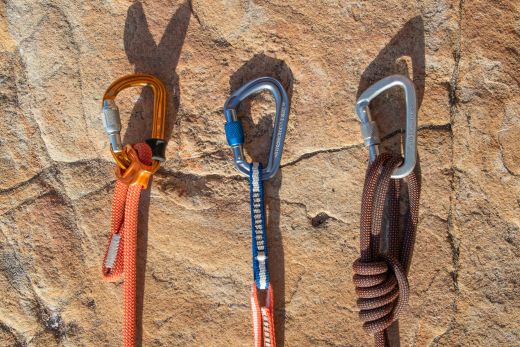At certain points in the broader activity of climbing, you have to secure yourself to an anchor without the use of the rope, and up until recently that meant using a 60 cm nylon sling girth-hitched to your harness. This changed a few years ago when some enterprising product designer came up with the idea of a variable-length personal anchor system. When it hit the shelves, some climbers saw the value in an adjustable leash straight away. Others wrote off the PAS as another piece of superfluous gear they didn’t want to carry with them. If you’ve heard these very different opinions yourself and are wondering if there is any kind of objective truth, this article is for you. In it we’ll look at the pros and cons of the different types of adjustable leashes and describe the scenarios in which you might want to use one.
What are lanyards and personal anchor systems?
A lanyard is anything that a climber can use to tether herself to the anchor, and a personal anchor system is simply an adjustable lanyard – one that can be used to secure oneself closer or farther from a clip-in point.
Why use an adjustable lanyard instead of a sling?
Lanyards are not designed to be fallen onto, and the advantage of an adjustable lanyard is that it makes it easier to eliminate any slack between you and your clip-in point. Some adjustable lanyards, like those that use a dynamic rope for a tether, also have better dynamic properties. This stretchiness can help reduce the impact force on you and the anchor if you do something foolish and fall onto the lanyard.
What’s wrong with a daisy chain?
While a daisy chain’s sling is very strong, its individual pockets are typically quite weak—between 2 and 5 kN. And here lies the danger. If you clipped two pockets across a tack and that tack failed, the carabiner would be ripped right out of the daisy chain. Link lanyards look a bit like daisy chains, but every loop is rated to 22 kN.
Note: I do not recommend using an adjustable lanyard for extending a rappel device. A sling is better for that.
Uses for adjustable lanyards
A PAS can be used for clipping yourself into the anchor in three common scenarios.
Securing yourself to a multipitch belay
The norm is for climbers to secure themselves to the anchor using the rope (usually with a clove hitch to the masterpoint). The advantages of this method are that it allows for full adjustability (useful if the anchors are some distance from where you are going to belay), it uses material which has some stretch, and it doesn’t require you to carry any extra gear. That said, there are situations where a PAS can be useful during a multipitch changeover, like when you’re swinging leads and the follower wants to clip in only briefly before leading the next pitch. Using a PAS this way is more practical on multi-pitch sport routes and climbs where racking space is less likely to be an issue.
Clipping into anchors on multi-stage rappels
Trad climbers are unlikely to use a PAS for securing themselves to belay anchors as this would require them to clip the end of the leash to a forward gear loop, where it would add to the clutter. However, it can be worth carrying a PAS on a rear gear loop or in a pack if you’re going to have to make several rappels to get back down. You could use a nylon sling for this purpose, but an adjustable lanyard is better for reasons already explained. Personally, I probably wouldn’t carry a PAS if I only had to make one changeover, but on routes with more multi-stage rappels, I almost always carry a PAS.
Cleaning top anchors
There are two commonly used techniques for cleaning top anchors. The first, which involves threading a loop of rope through the rings, can be performed with just an extra quickdraw to hold the climber in place. But the second technique, which involves untying from the rope before threading it through the anchors and retying, requires the use of a secure connection to the anchors. Again you could use a single-length (60 cm) sling, but an adjustable leash makes things just that much easier, especially in situations where 60 cm isn’t long enough.
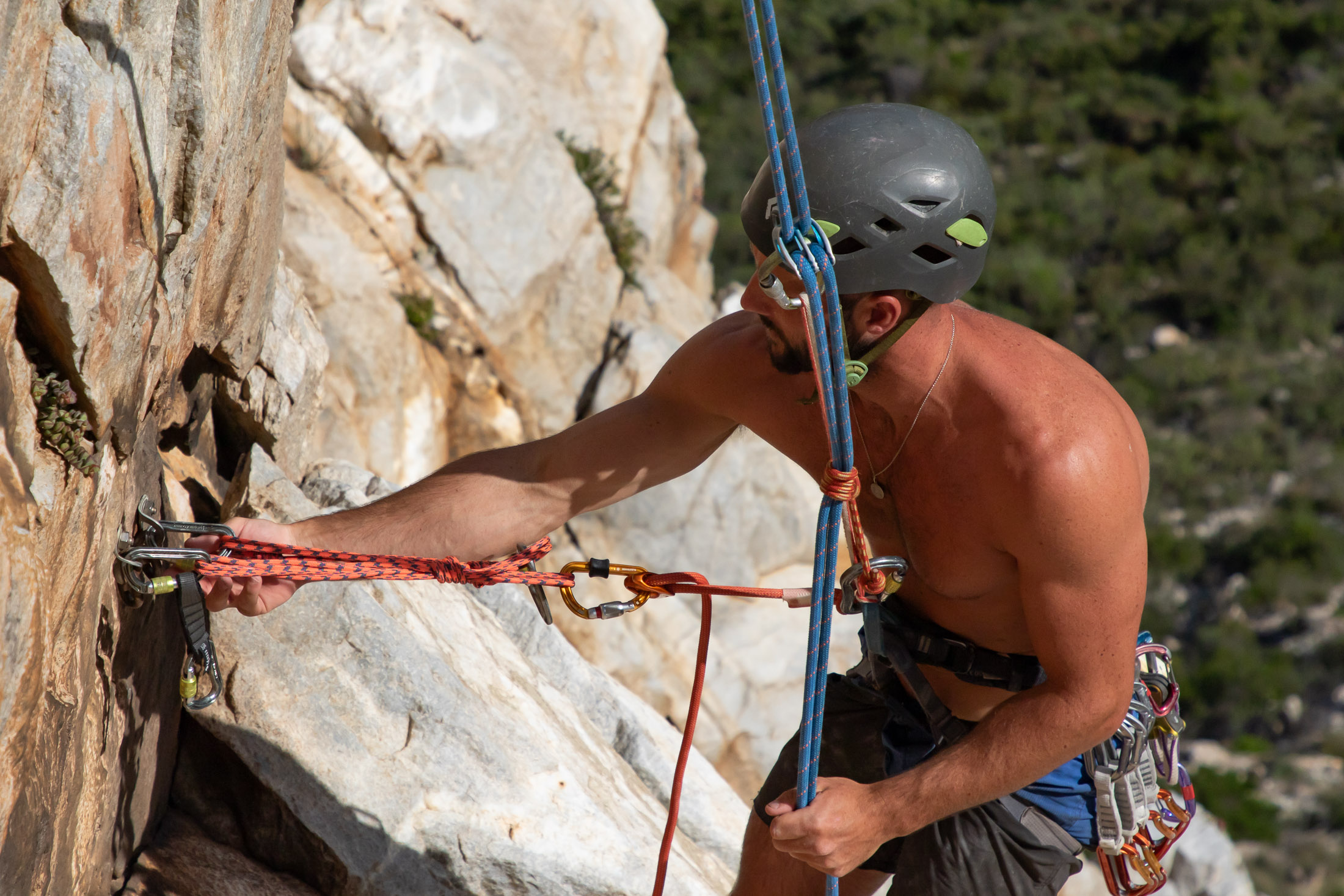
What to look for in an adjustable lanyard
There are four factors to consider when choosing a personal anchor system.
Dynamic
There is a big difference in the amount of elasticity in dynamic rope versus Dyneema webbing. Dyneema (or Dynex) has zero elongation, which makes even a short fall onto a Dyneema sling very dangerous. Link lanyards, which are made of similar material, have slightly better dynamic properties since the links themselves can flex when loaded, but even then a fall onto one can result in a very high impact force. Dynamic rope, as the name suggests, is more stretchy and will absorb more energy in a fall. Again, you still want to do your best to avoid a fall.
Weight and rackability
Weight and bulkiness are always a factor when choosing climbing gear but especially so when you’re going to carry a large rack. In terms of weight and bulkiness, there’s not a lot separating the four commercially available PAS’s. Link lanyards are lighter but only by around 30 grams. The real difference is in how easy they are to rack. A link lanyard can be clipped through any number of its loops whereas a dynamic rope lanyard will dangle a unless you make a slight modification: make a small hole in the closed loop at the end of the rope and thread a piece of 4 mm accessory through it to create a loop that can be clipped to a gear loop with the lanyard’ s carabiner.
Adjustable length
Adjustability is achieved in one of two ways. In the case of dynamic rope lanyards, the mechanism is a camming-connection point that can be slid up and down the tether. And in the case of link chains, it’s the separate loops, each of which can be clipped off at a different distance. Of the two types, rope lanyards allow for greater adjustability (the connection point can be positioned anywhere along the length of the tether), and they can be adjusted even when clipped to something – very useful when you need to lengthen the tether to test your rappel setup.
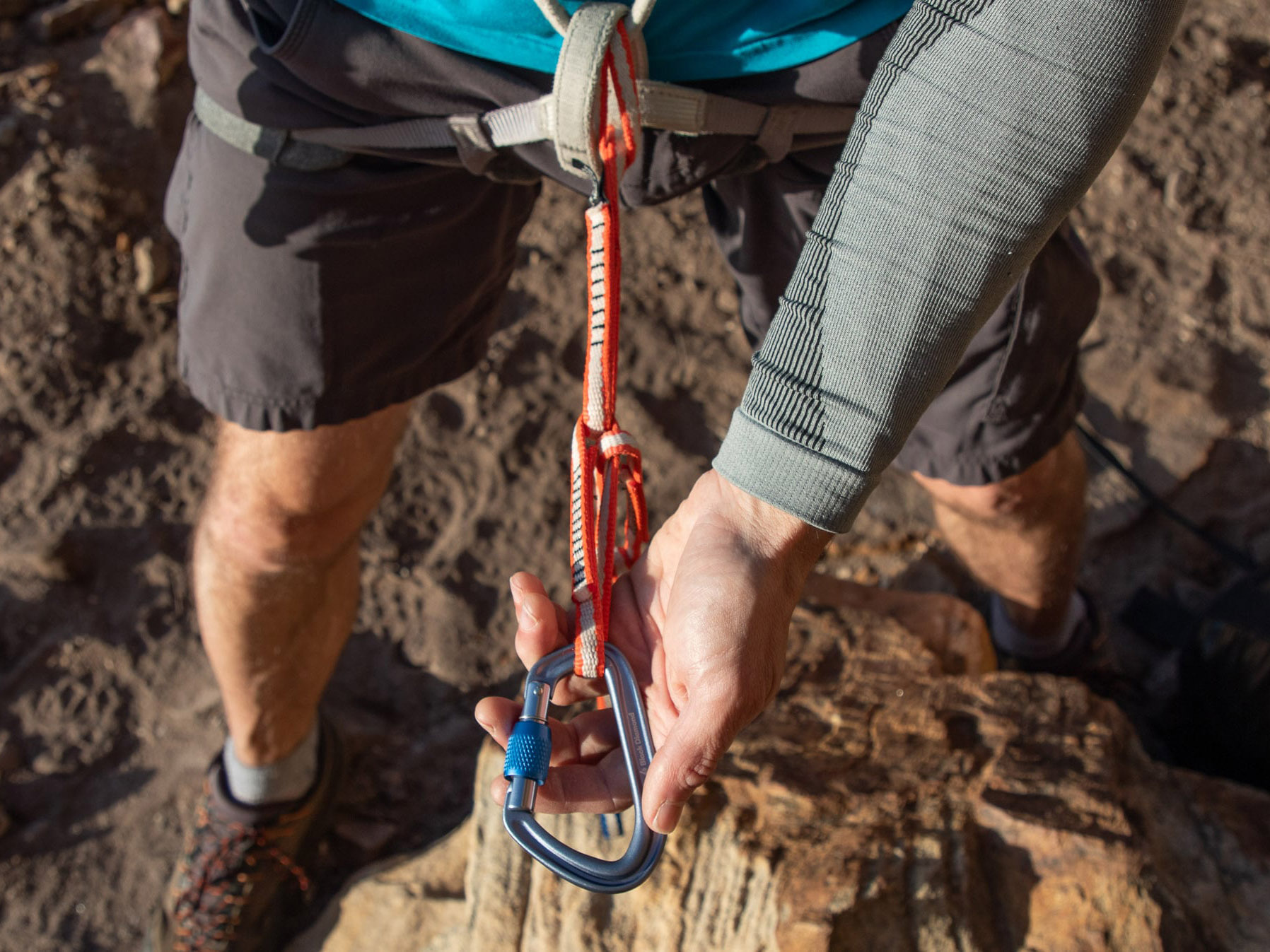
Types of adjustable lanyard
There are three commonly used types of adjustable lanyard or personal anchor system. Two of these are commercially available, while the third requires a little DIY.
Link lanyards
The initial attraction of the daisy chain was that it made it possible for climbers to clip themselves off at different distances from the anchor. It was only after there had been a few accidents that people realised the danger of using a daisy chain for this purpose and started looking for alternatives. It was then that Metolius came up with their Personal Anchor System, a sewn chain that offered the advantages of a variable length while removing the dangers of a daisy chain. The original Metolius PAS is still popular, but climbers now have another option in the Black Diamond Link if they want a sewn chain lanyard.
- Metolius PAS 22 (Buy at REI)
- Black Diamond Link PAS (Buy at Black Diamond)
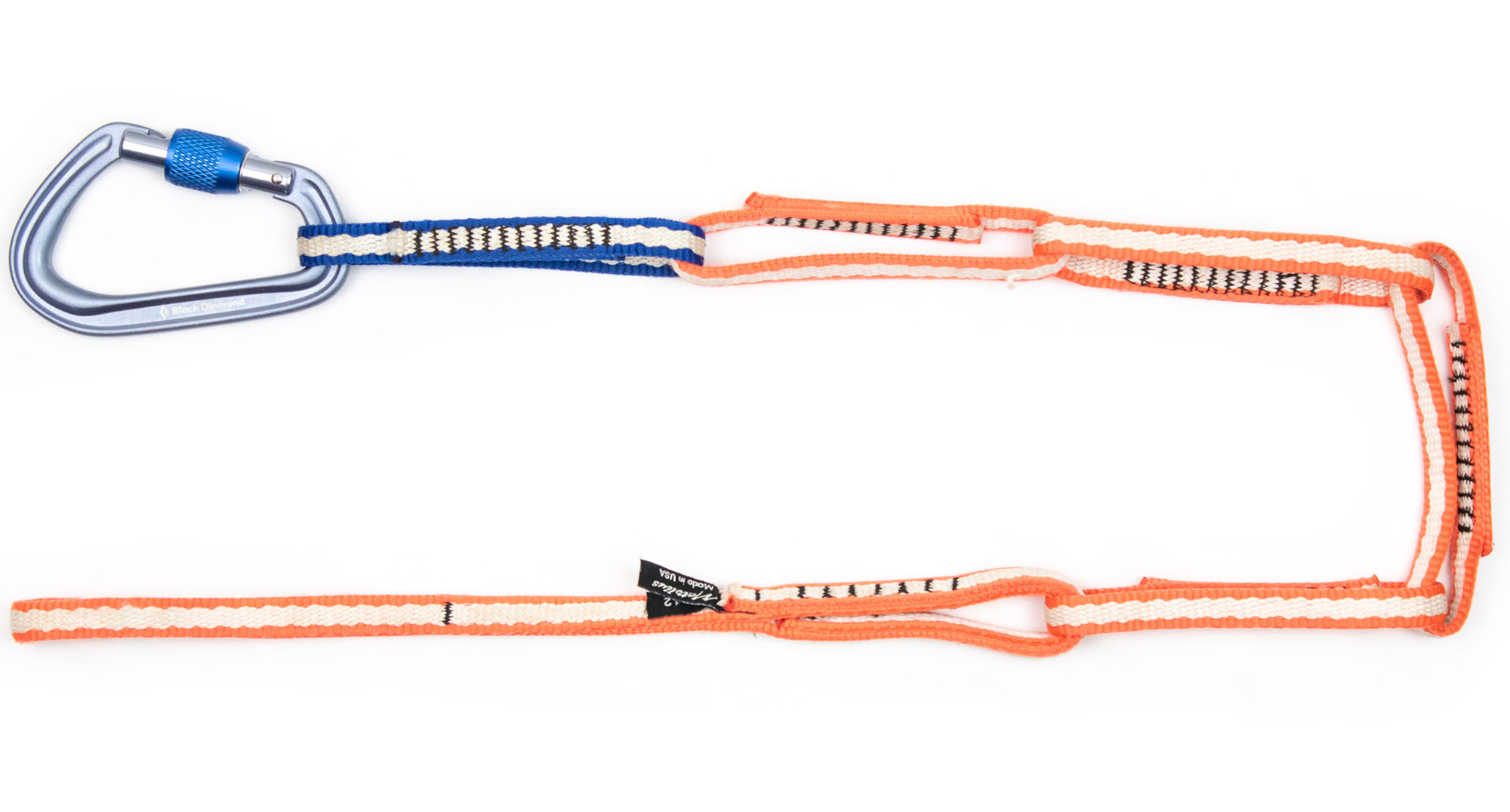
Cam-adjustable dynamic rope lanyards
Cam-adjustable lanyards can be seen as an evolution of the personal tether. Besides improving on the dynamic properties of link layards, this type of lanyard can be adjusted to any length (within its range of 15 to 95 cm range) and can even be shortened or lengthened while it is connected to the anchor. This makes it possible to lengthen the lanyard when you want to weight and test your rappel setup (and makes it easier to unclip the tether from the anchor). Petzl, Edelrid and Camp make cam-adjustable rope lanyards, but the Petzl Connect Adjust seems easier to release and adjust.
- Petzl Connect Adjust (Buy at REI)
- Camp Dynamic Belay Lanyard (Buy at Backcountry.com)
- Edelrid Switch Adjust (Buy at REI)
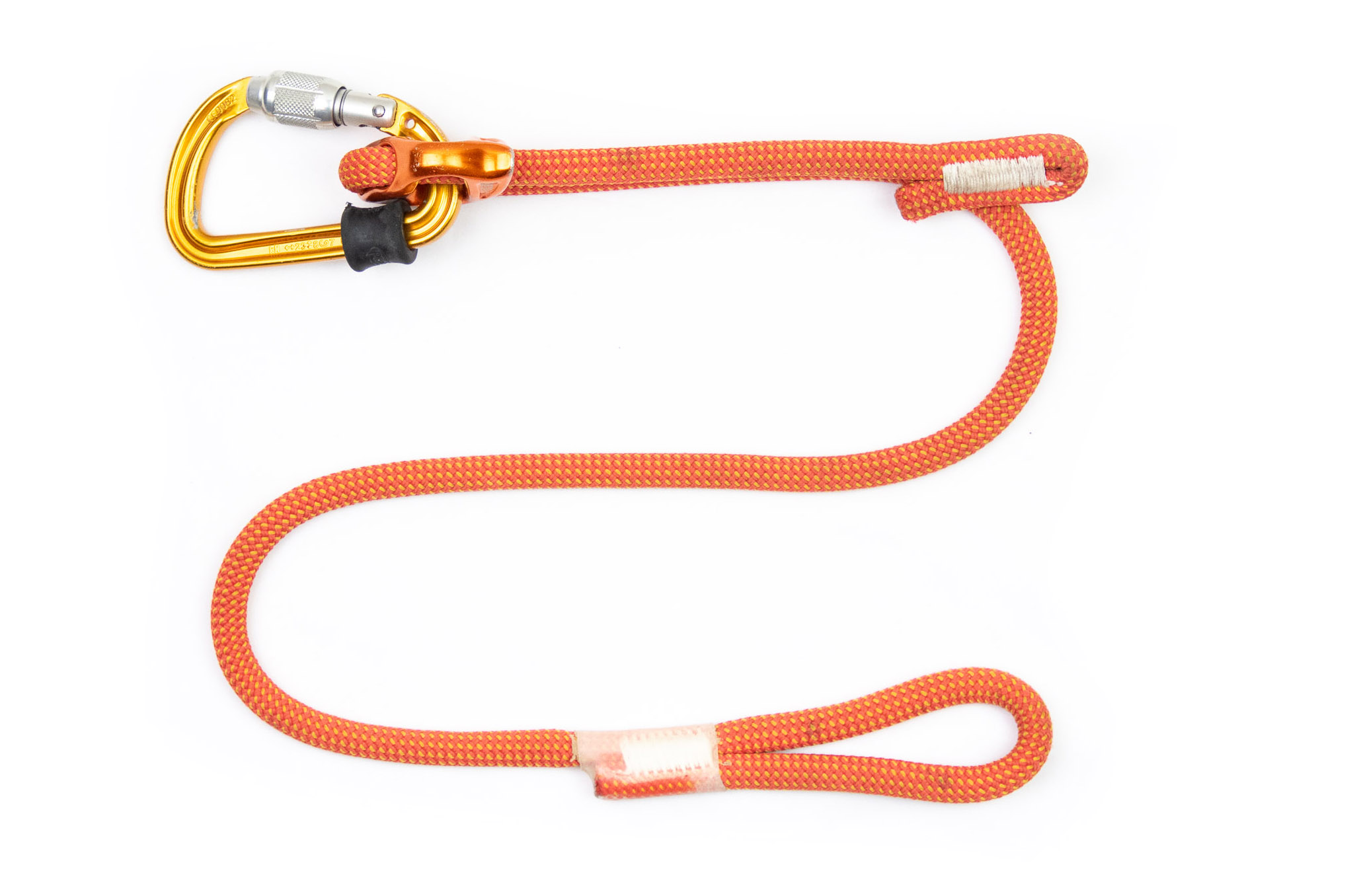
Purcell Prusik
Many old school climbers prefer a Purcell prusik for its adjustability and energy-absorbing potential. Accessory cord is actually slightly less stretchy than dynamic rope, but the knot in a Purcell prusik slips slightly under load, which improves its dynamic properties. Sterling actually makes double-strand Purcell prusiks, but most climbers familiar with the Purcell prusik prefer the simplicity of a single-strand prusik made from 7 mm accessory cord, something that can be bought from any gear store. The downsides to a Purcell prusik are that it can only be shortened to half its length and that it’s not as easy to rack on a gear loop.
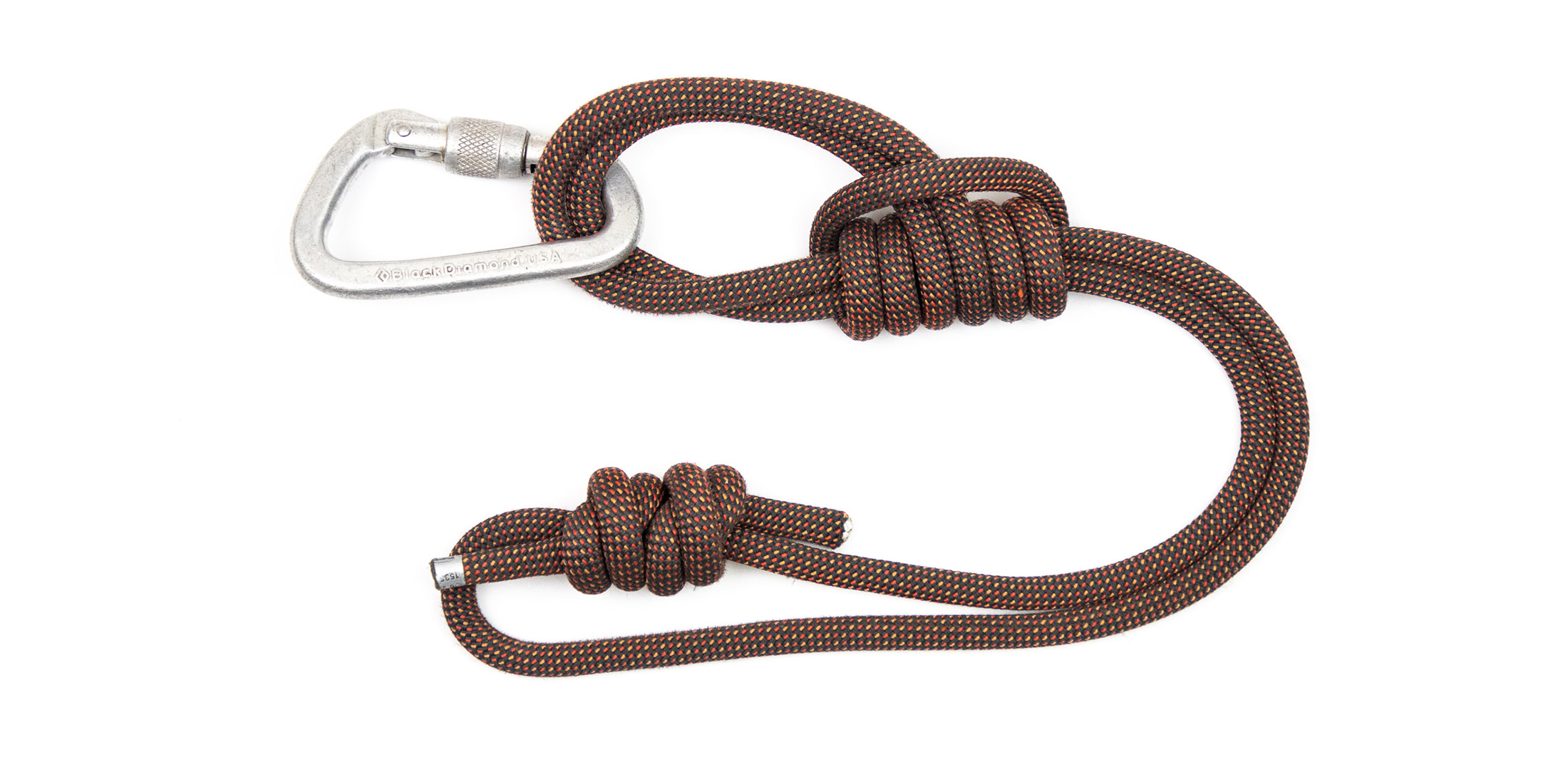
How to attach a personal anchor system to your harness
The correct method for attaching a lanyard to your harness depends on the type. The manufacturers of link lanyards (Black Diamond and Metolius) recommend girth-hitching their lanyards around both tie-in points (leg loop and waist loop), but the manufacturers of dynamic rope lanyards (Petzl and Camp) recommend girth-hitching their lanyards through the belay loop.
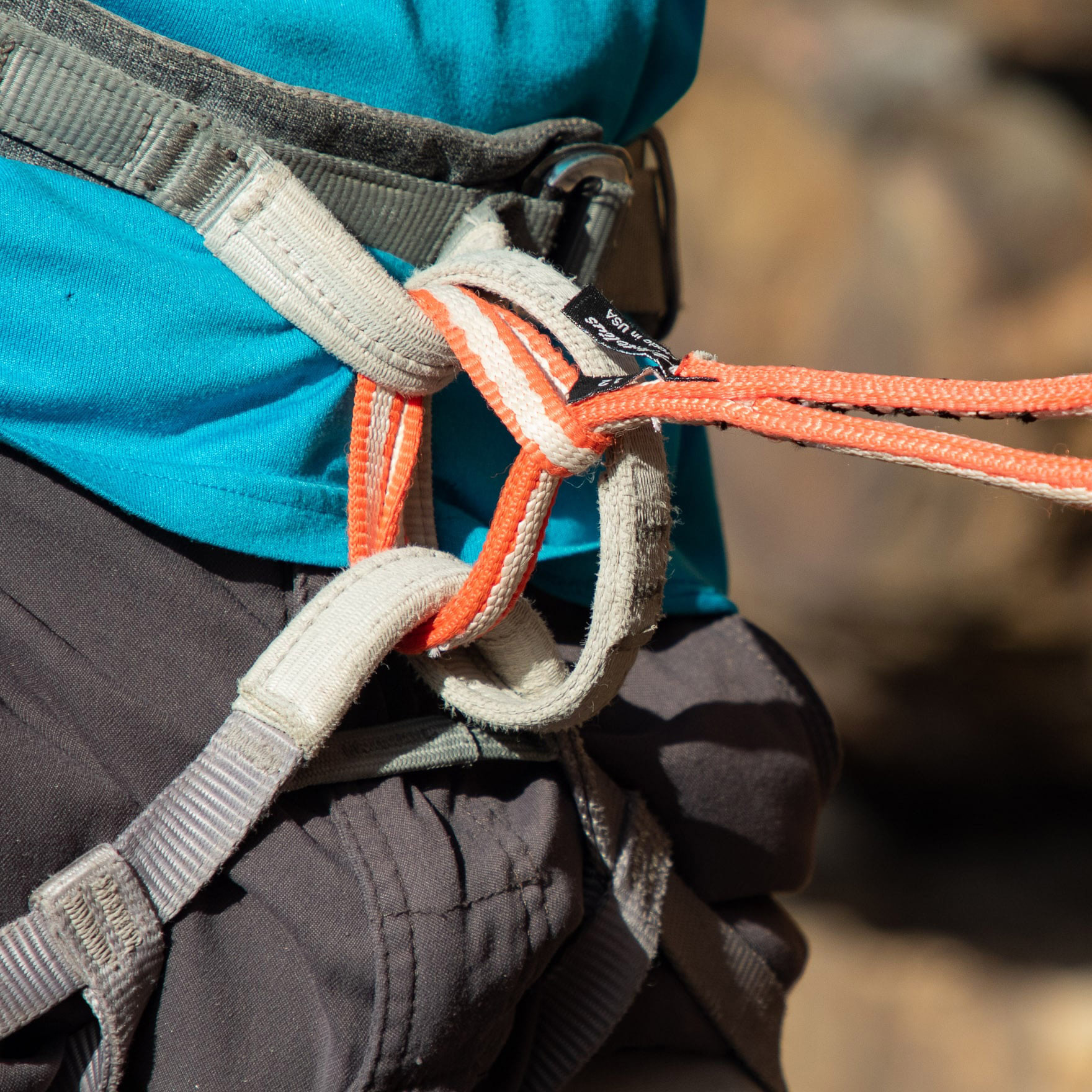
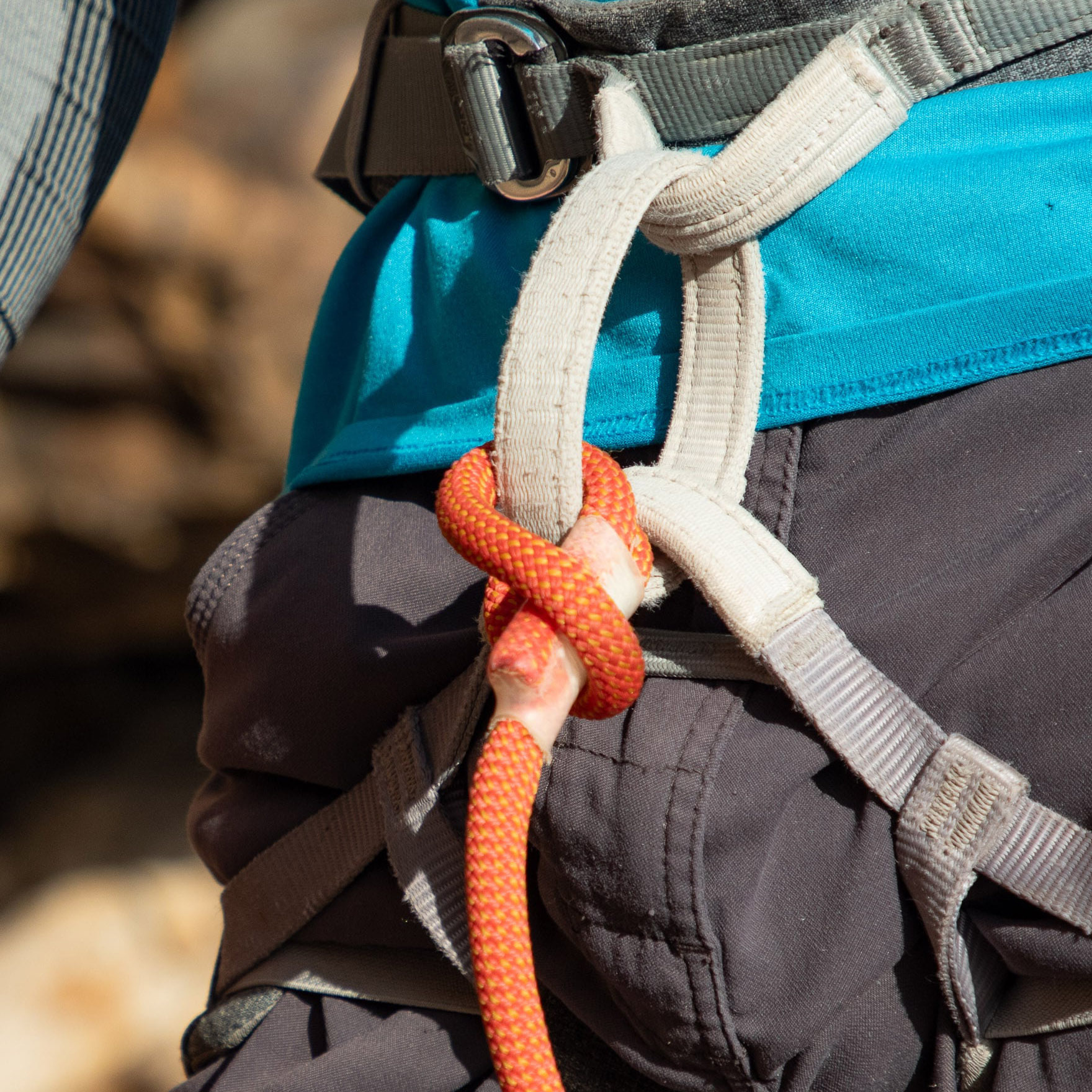
Why the difference? Although a sling is still very strong when girth hitched to the belay loop, it’s stronger when girth-hitched through the tie-in points, making these the recommended attachment points for link lanyards. It’s quite difficult to girth hitch a rope lanyard through the tie-in points, and it doesn’t make a real difference to the strength of the tether. So, it makes a lot more sense to girth hitch it to the belay loop.
Choosing a carabiner to use with an adjustable lanyard
Given that you are going to want to use your lanyard to make a secure connection, the best carabiner for any kind of lanyard is going to be a locking carabiner, but that doesn’t mean a full-sized HMS. A large carabiner will be difficult to get in and out of cramped anchors and will just add unnecessary weight to your rack. Look for a small locker with a gate opening of between 17 and 20 mm.
Another design feature to look out for is a keylock nose, which will make the carabiner easier to unclip from a bolt hanger. Almost all modern locking carabiners have this type of clean nose, but many older locking carabiners have a notched nose – a design feature you want to avoid when choosing a carabiner from a collection of older gear.
Where to stow your lanyard while you climb
If you are only going to use your lanyard for rappelling, I recommend storing it on a rear gear loop (or in your pack if you’re going to carry one) where it will be out of the way until you need it. If, on the other hand, you are going to keep your PAS girth-hitched to either the belay loop or tie-in point (as you would if you intend to use it to secure yourself to the anchor at the end of a pitch), you will need to clip the end and possibly a mid-point to something. Some climbers run the sling between their legs and clip it to a rear gear loop, essentially making a thong out of their lanyard. Besides making you look like a complete gumby, this is also a bit dangerous as the leash could cause injury if it caught on something in a fall.
Running a lanyard to a rear loop around the outside is also problematic as it’s likely to get in the way when you try to store and retrieve gear from your gear loops. In the case of a link lanyard, the best solution is to clip the middle and end loops of the lanyard to one the two forward gear loops with the same carabiner. You can do something similar with a dynamic rope lanyard by sliding the camming connection point to just past the middle of the leash and then clipping the accessory cord loop at the end of the lanyard (the modification mentioned earlier) to the connecting carabiner and stowing this on one of the forward gear loops.
Get more advice from this gearhead
You now have everything you need to know about personal anchor systems and when to use one. But don’t stop here. On this website you’ll find many more in-depth gear guides on everything from rock shoes to trad gear as well as many how-to articles. You can find these under the different sections in the categories menu, or, better yet, sign up for my newsletter to get all the latest from Trail & Crag delivered straight to your inbox.
